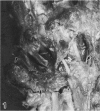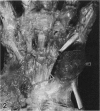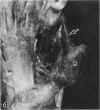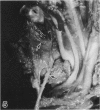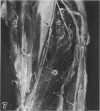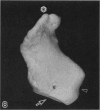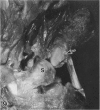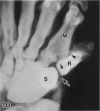Abstract
The function of the radial sesamoid bone (RS) in the giant panda (Ailuropoda melanoleuca) was examined by macroscopic study of RS-related bones and muscles. The RS was observed to be connected to the scapholunar and the 1st metacarpal bones. A joint cavity was present between the proximal surface of the RS and the distal area of the scapholunar bone but the RS possessed a fibrous joint connecting it to the proximal radial surface of the 1st metacarpal bone. It is suggested that the RS possesses no substantial abductor-adductor function as the articulation between the RS and the 1st metacarpal bone (FM) seems not to permit flexible movement of the RS. The RS may be a supporting process opposite the digits in the palm when the animal flexes its 5 digits to grip objects, but it is not an active grasping apparatus. In the muscular system, abductor pollicis longus provided strong tendons to the RS as an RS-abductor, whereas the abductor pollicis brevis, opponens pollicis and aponeurosis palmaris were well developed as an RS-adductor muscle group. Observation of RS articulations, however, showed that the muscles do not provide appreciable abduction-adduction actions for the RS.
Full text
PDF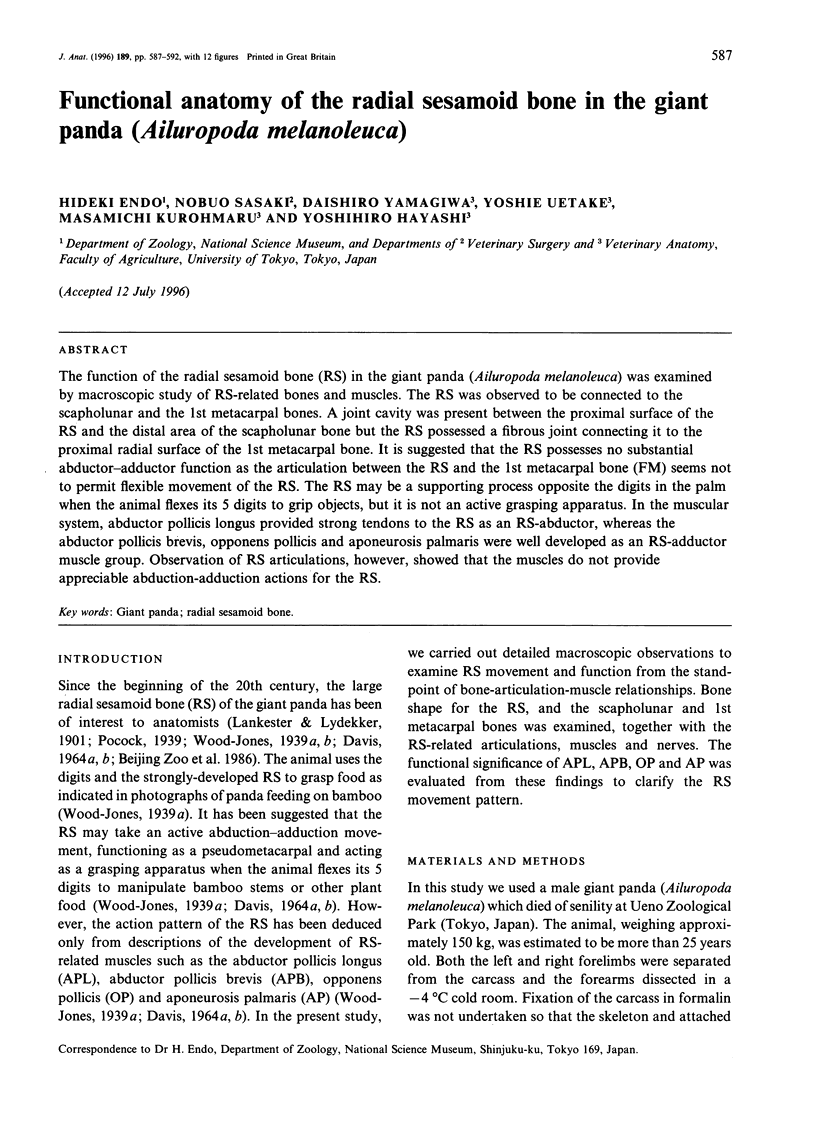
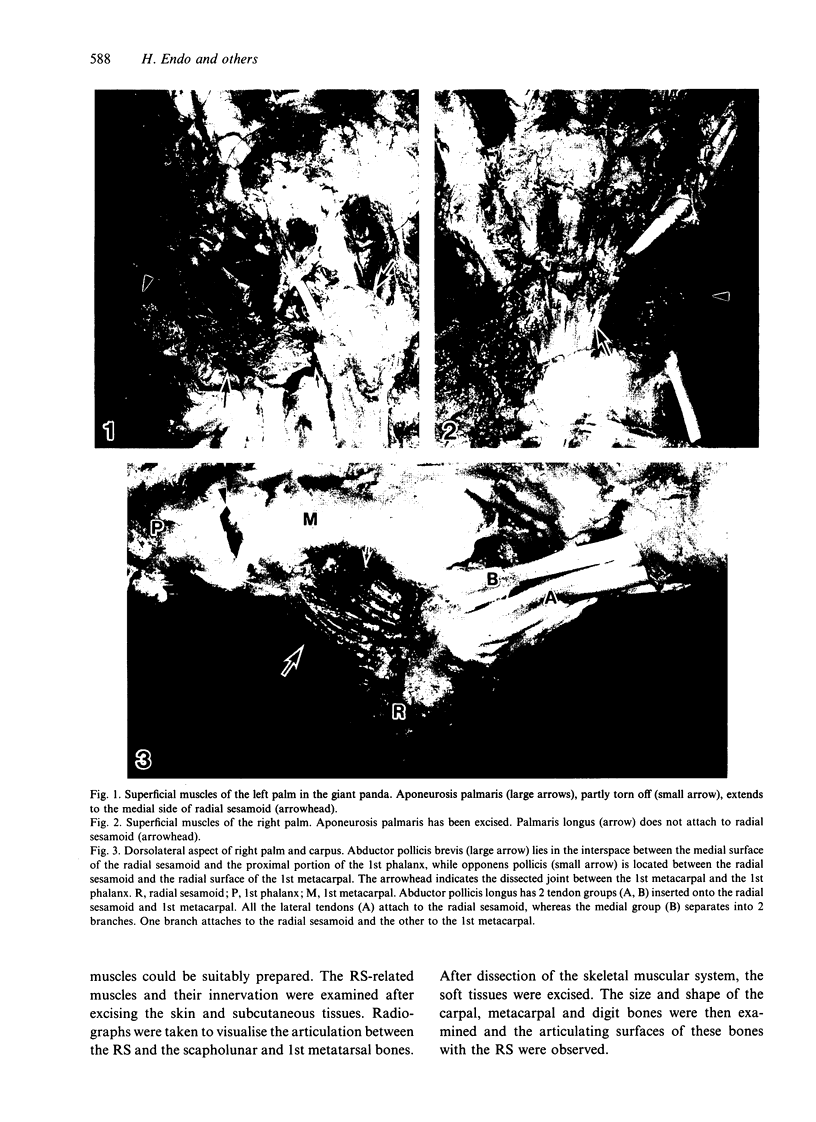
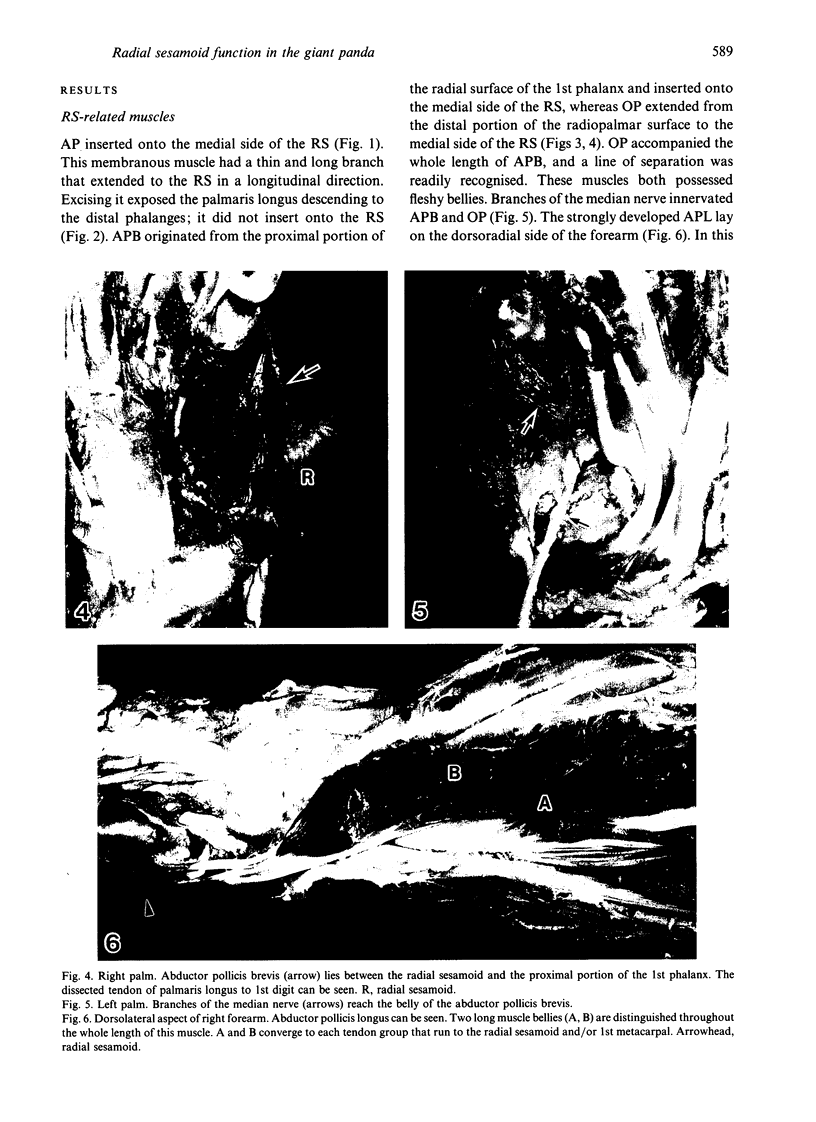
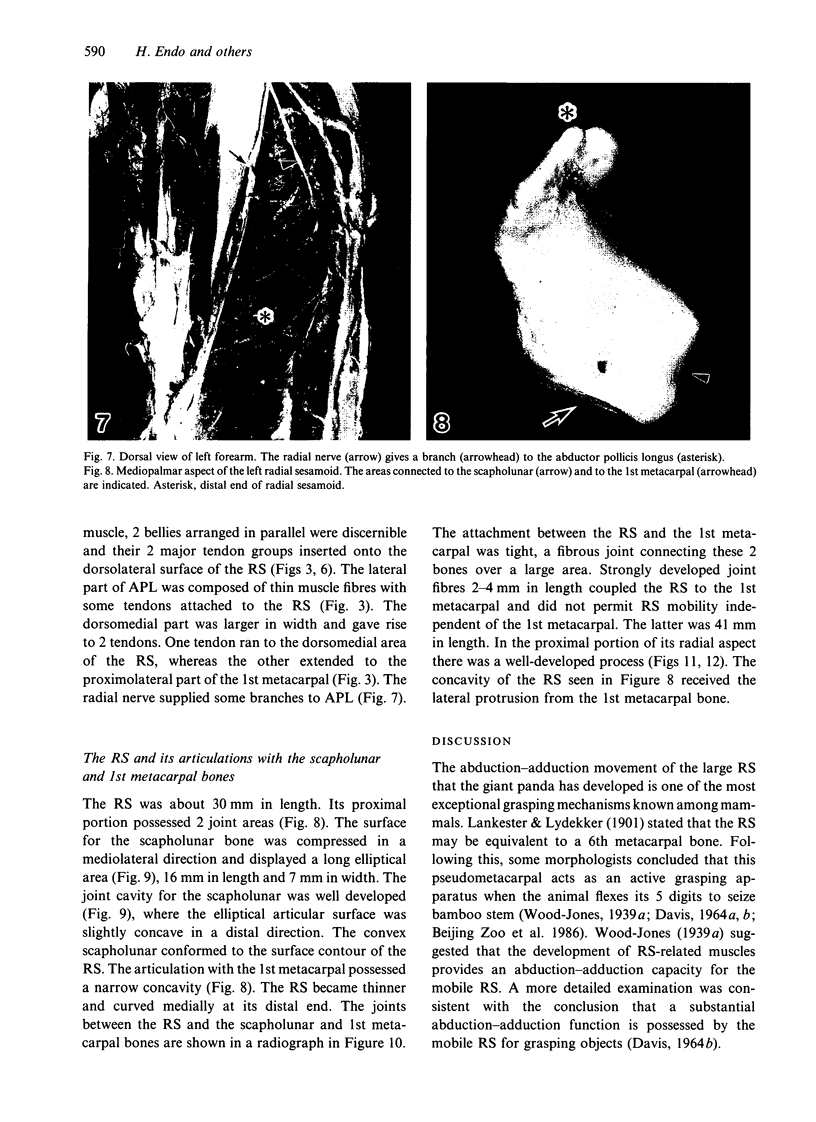
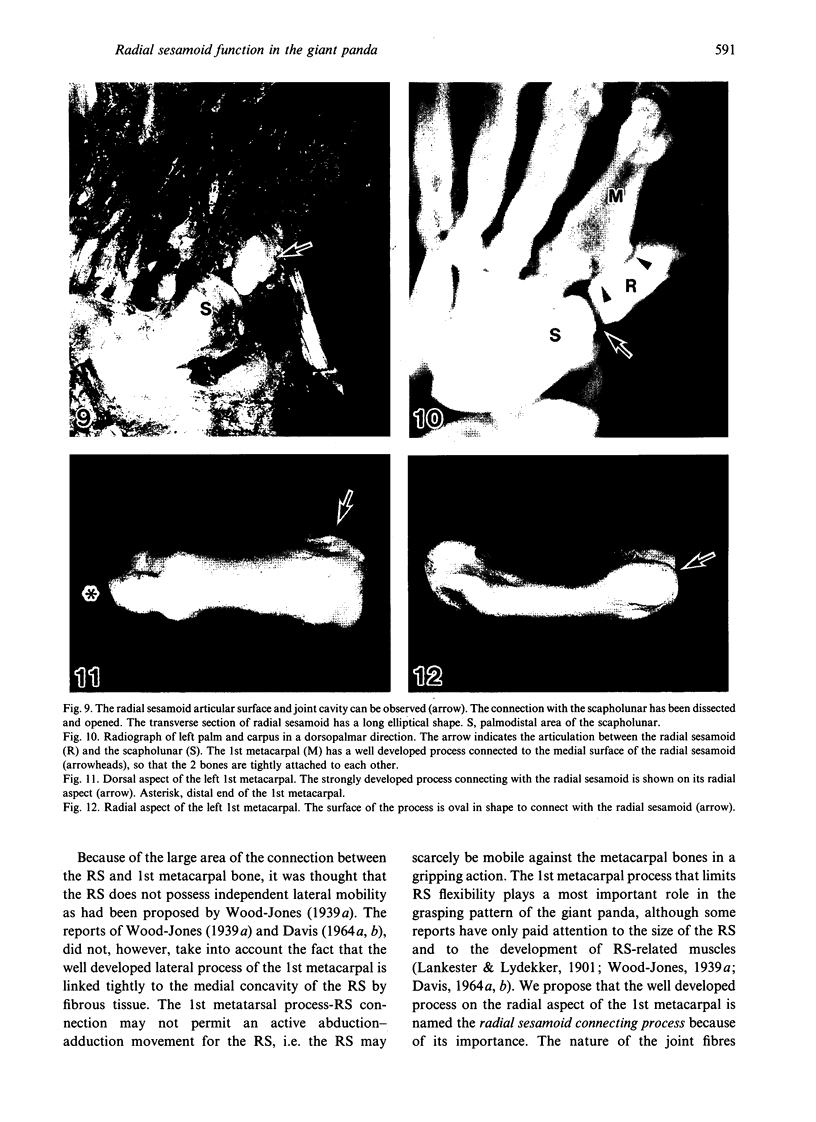
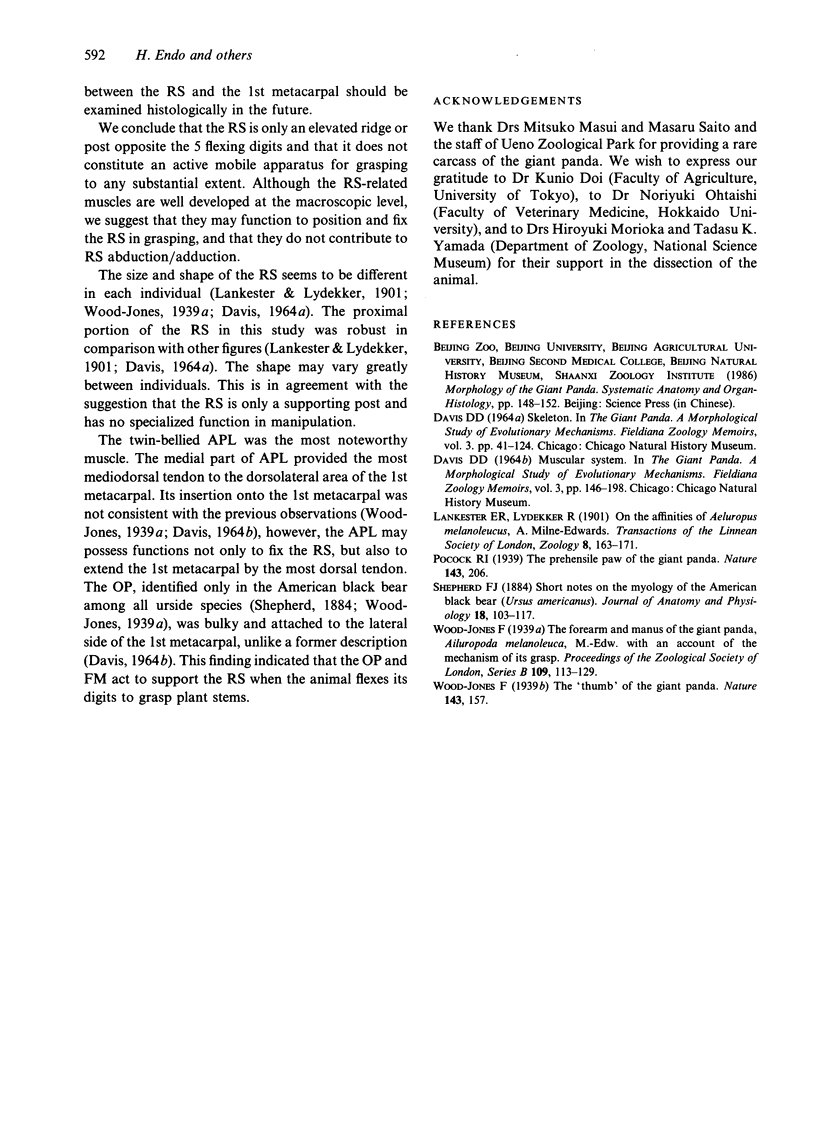
Images in this article
Selected References
These references are in PubMed. This may not be the complete list of references from this article.
- Shepherd F J. Short Notes on the Myology of the American Black Bear (Ursus americanus). J Anat Physiol. 1883 Oct;18(Pt 1):103–117. [PMC free article] [PubMed] [Google Scholar]



